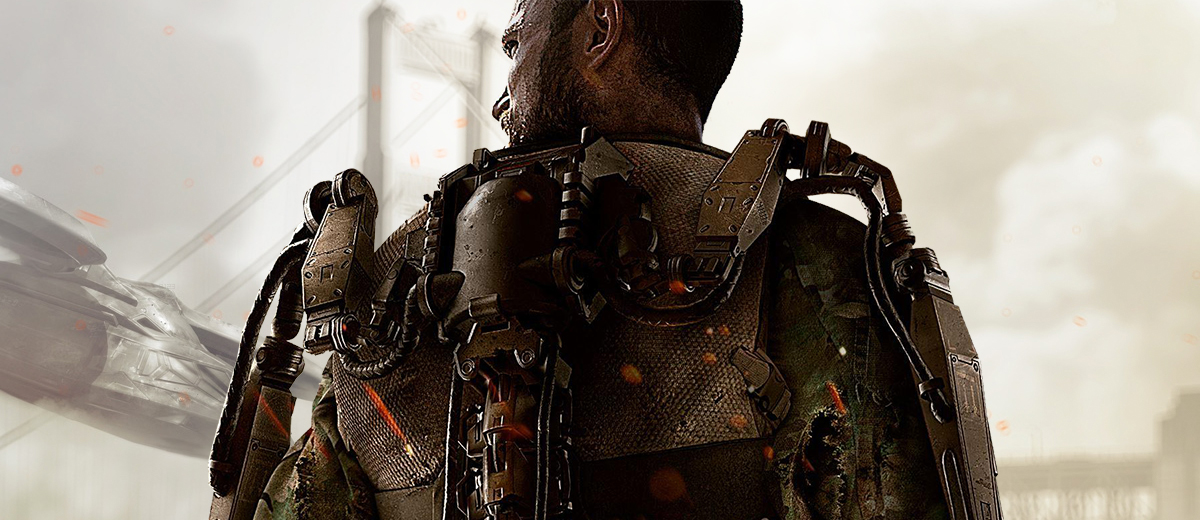 NOTE: Due to the technical differences and inconsistencies between the current and last-gen releases of Call of Duty: Advanced Warfare this review may not be applicable to the PlayStation 3 and Xbox 360 releases of the game. Technical and gameplay experiences may vary by platform.
NOTE: Due to the technical differences and inconsistencies between the current and last-gen releases of Call of Duty: Advanced Warfare this review may not be applicable to the PlayStation 3 and Xbox 360 releases of the game. Technical and gameplay experiences may vary by platform.
 Advanced Warfare stars Private Jack Mitchell (voiced by Troy Baker), whom after a disastrous mission in Seoul loses his arm and is discharged from the United States Marine Corps. Mitchell is approached by Jonathan Irons (voiced by Kevin Spacey), the CEO of Atlas; the world’s largest private military organisation. Irons offers him to replace his severed arm with a top-of-the-line prosthetic, and serve as part of Atlas’ private military arsenal.
Advanced Warfare stars Private Jack Mitchell (voiced by Troy Baker), whom after a disastrous mission in Seoul loses his arm and is discharged from the United States Marine Corps. Mitchell is approached by Jonathan Irons (voiced by Kevin Spacey), the CEO of Atlas; the world’s largest private military organisation. Irons offers him to replace his severed arm with a top-of-the-line prosthetic, and serve as part of Atlas’ private military arsenal.
As Atlas is hired by countries all over the world to fight their wars Mitchell is sent along with this squad to track down members of the KVA; a technophobic terrorist organisation that has been staging numerous attacks across the globe. Whilst the squad is out finding answers, the truth is revealed that Jonathan Irons and Atlas may not be all that they seem.
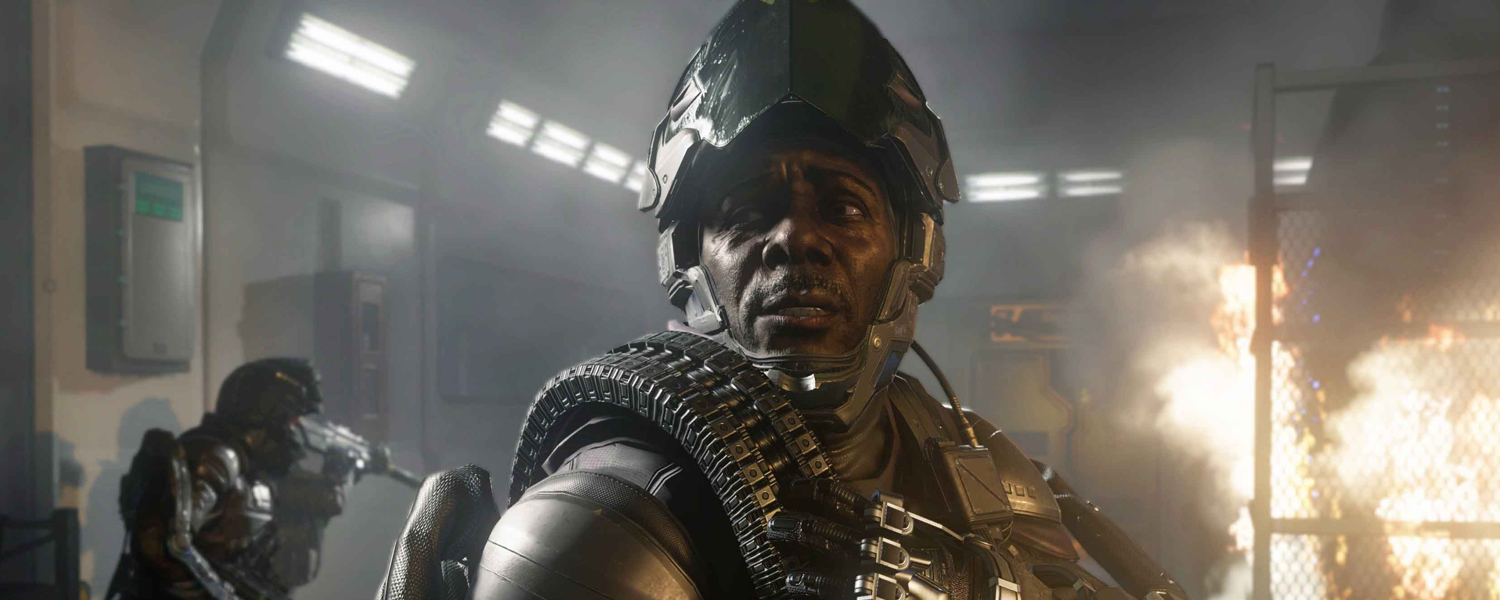 Whilst Advanced Warfare’s plot isn’t the strongest there is, it’s certainly some of the better material that the franchise has had to offer the past few years. The narrative is still rushed to an incredible extent though, and the heavy reliance on huge set pieces never really gives the material a chance to shine. There are some attempts to make the player more interested in its main protagonist, but most of the attempted ideas are either not given enough time to developed are simply absent to begin with. An example of this is his relation with his fellow soldier in the beginning of the game, who is described as his brother in arms. The dialogue tries to convince you that the two were inseparable, but on screen you don’t see any of these references come to play, which makes most of his background either irrelevant or unbelievable. The entire narrative lasts around six hours, and honestly you don’t get that much closure in the end. The final levels of the game are filled with great action, but on a narrative front it may seem incredibly disappointing for players who are playing it for the story itself. A complete walkthrough should take about six hours.
Whilst Advanced Warfare’s plot isn’t the strongest there is, it’s certainly some of the better material that the franchise has had to offer the past few years. The narrative is still rushed to an incredible extent though, and the heavy reliance on huge set pieces never really gives the material a chance to shine. There are some attempts to make the player more interested in its main protagonist, but most of the attempted ideas are either not given enough time to developed are simply absent to begin with. An example of this is his relation with his fellow soldier in the beginning of the game, who is described as his brother in arms. The dialogue tries to convince you that the two were inseparable, but on screen you don’t see any of these references come to play, which makes most of his background either irrelevant or unbelievable. The entire narrative lasts around six hours, and honestly you don’t get that much closure in the end. The final levels of the game are filled with great action, but on a narrative front it may seem incredibly disappointing for players who are playing it for the story itself. A complete walkthrough should take about six hours.
Performance-wise the voice and motion capture for most characters is pretty decent, and there are even a few impressive performances throughout the campaign. Troy Baker does a good job with the material he was given to work with, and most supporting characters range from okay to great. By this I am talking about the actual performances however, and not the material and background stories of their respective characters.
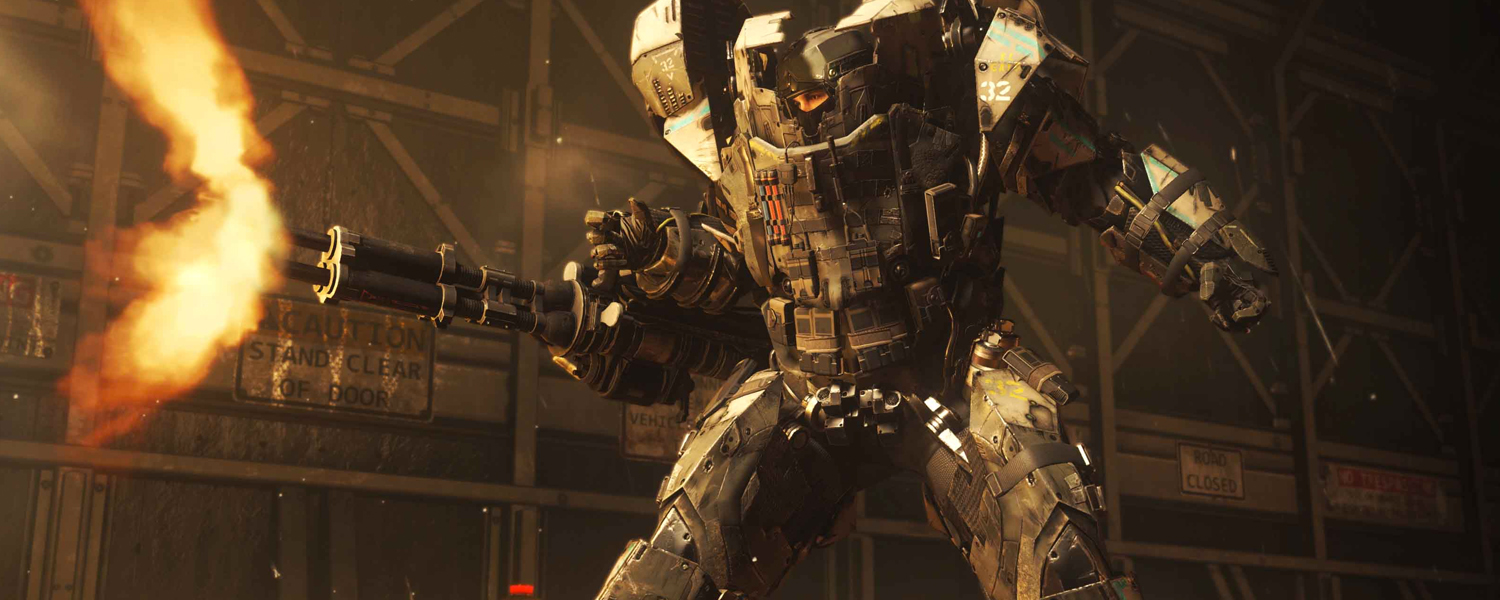
The flow of the narrative through the campaign is ok, but missions are easily interchangeable when it comes to the order of them. The narrative’s best points aren’t really part of the story at all, but rather in the concepts that the game introduces. Whilst the future setting isn’t new to the franchise, Sledgehammer has created a pretty believable view of futuristic warfare when it comes to technology and tactics. I recognised a lot of technology that is already in development today, and even though their use is exaggerated for gameplay convenience, it’s still pretty interesting to see a take on futuristic warfare that in theory isn’t as far-fetched as one might believe. Despite its lacklustre story, Advanced Warfare does offer some very thrilling moments throughout the campaign, and if you’re getting the game for the complete package it’s definitely worth playing through at least once for gameplay purposes.
 Call of Duty’s debut on next-gen with Ghosts wasn’t exactly its best moment, but Advanced Warfare might be the biggest leap the franchise has made the past few years. Whilst the changes aren’t on the same level as most of the other continuations of existing franchises this generation, it still manages to improve the foundations of a franchise that has been staying behind for the past few years.
Call of Duty’s debut on next-gen with Ghosts wasn’t exactly its best moment, but Advanced Warfare might be the biggest leap the franchise has made the past few years. Whilst the changes aren’t on the same level as most of the other continuations of existing franchises this generation, it still manages to improve the foundations of a franchise that has been staying behind for the past few years.
Worth noting beforehand is the performance gap between the different editions of the game. This review is based on the PlayStation 4 version, and there may be significant differences in performance depending on the platform you play it on. The PlayStation 4 version runs at a resolution of 1920×1080 at 60fps, the Xbox One version runs at 1360×1080 at 60fps and the PC version obviously depends on the specifications of your rig itself. The PlayStation 3 and Xbox 360 versions run at a Sub-720p resolution, but we can’t comment on the performance for those versions due to the significant differences in development and hardware.
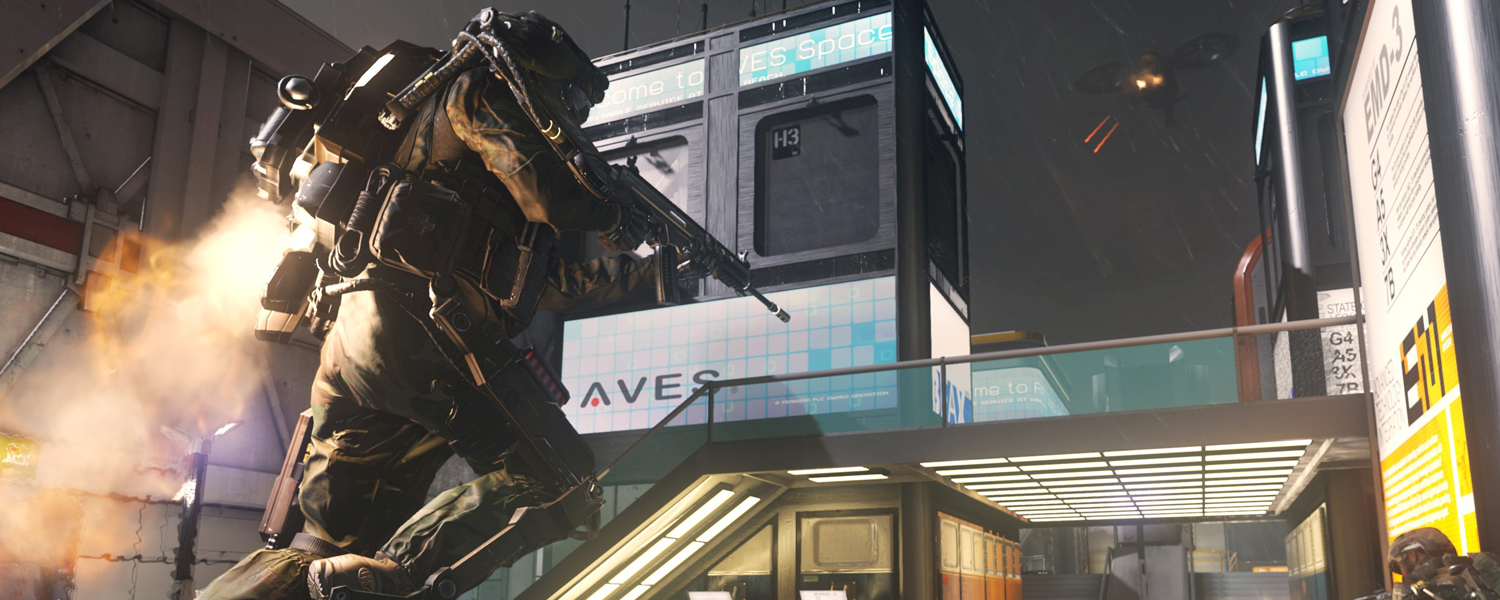
Performance-wise the PlayStation 4 version seems to run smoothly most of the time, though the frame rate may dip to 54 frames per second from time to time. The visual fidelity in static images is good, but Advanced Warfare’s visuals tend to look more impressive in motion due to its heavy reliance on post-processed effects such as motion blur, subtle use of chromic aberration and depth of field effects. Paired with improved animations and fast-paced action the game often masks its visual drawbacks by phasing them out in motion, which isn’t necessarily a bad thing depending on how you perceive these actions.
Character models have been improved from the previous instalments, though they range from impressive to passable depending on their roles in the game. Most of the main characters are pretty good looking, but secondary characters and NPC’s can look pretty bad when seen up close, which is understandable in some cases but something worth noting none the less. Animations have been significantly improved, and I was often impressed by the movement of the NPC’s during certain sections. Secondary characters sometimes have a problem when it comes to their course, and sometimes you may see the invisible line they’re walking on by sudden changes in directions that aren’t fluid enough to be natural.
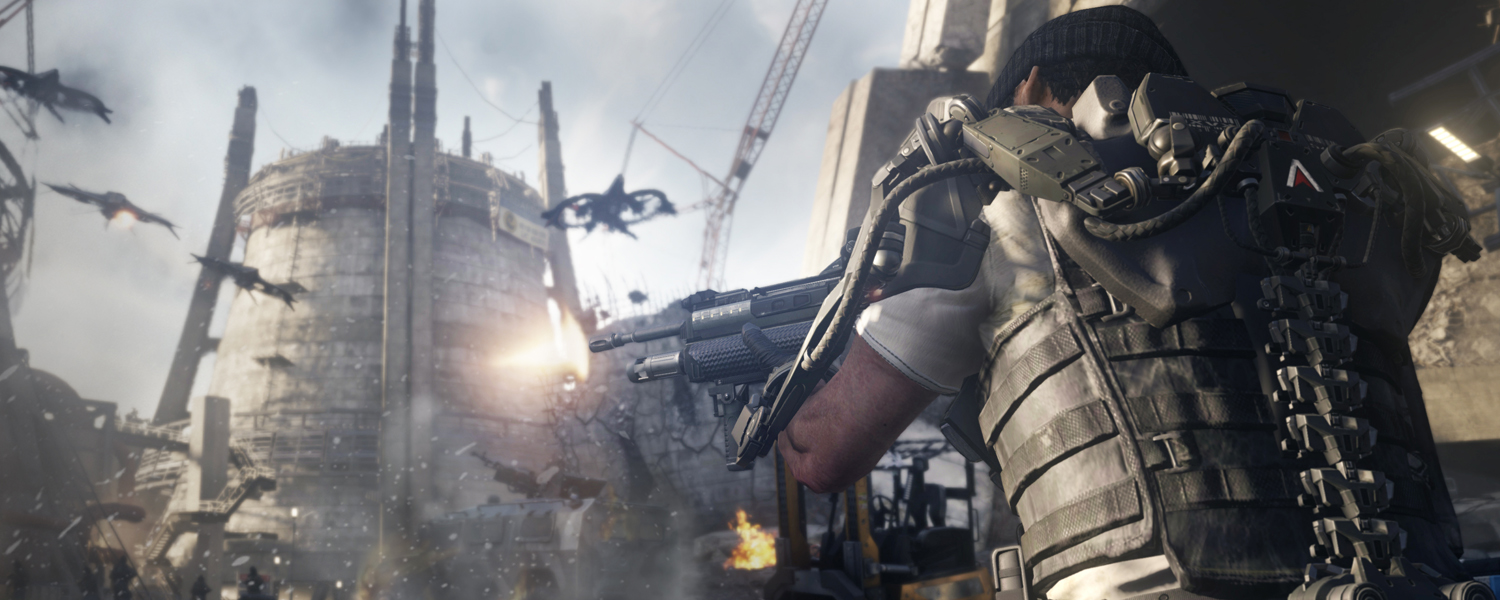
Facial animations are a hit or miss, and whilst most secondary characters have pretty well-made animations the biggest issue in the game is ironically those of Kevin Spacey’s character. His character seems to have the typical dead-eye syndrome that many games seem to cope with, and often the top part of his face will look motionless and dead as his mouth moves. One of the points that Activision advertised was the fact that it was using the newest facial-capture technology, but in motion it seems that a lot of this tech paid off more in the CGI cutscenes than the actual gameplay.
Environments generally look pretty sleek, though textures may vary by material such as the difference between natural elements and fabricated elements such as steel, fabric and such. Assets in general look well-made, though some of the edges may look rough when viewed up close. In multiplayer the game does take a step down, but this is most likely because of the lack of the post-processing done during the campaign.
Advanced Warfare’s HUD in the campaign is the most simplistic it’s ever been in the franchise. Whilst there are direction markers for your objectives present, most of the information will be on your weapon itself, including ammo and grenade counts. Having all of this in the same place removes a lot of the clutter from your screen, and adds actually helps immersing yourself into the game a bit more. The multiplayer mode takes a more traditional approach due the mini-map and score sections, but even in this form it still seems a lot more simplistic than the crowded HUD’s the franchise usually applies.
 At the first glance Advanced Warfare plays like a lot of its predecessors, and whilst for a large part it still does, the small refinements and additional features in this title make this game stand out more than most of its predecessors in the franchise. The biggest difference in gameplay is the addition of the Exo-skeleton, which funny enough actually strengthens the Call of Duty-formula in itself rather than creating an entirely new dynamic.
At the first glance Advanced Warfare plays like a lot of its predecessors, and whilst for a large part it still does, the small refinements and additional features in this title make this game stand out more than most of its predecessors in the franchise. The biggest difference in gameplay is the addition of the Exo-skeleton, which funny enough actually strengthens the Call of Duty-formula in itself rather than creating an entirely new dynamic.
Initially the concept of the Exo-skeletons and their use may seem familiar from titles such as Titanfall, and whilst there are some similar uses, they definitely add a unique touch to the game. Traversal is the biggest change that you’ll catch early on. Double jumping changes up traversal quite a bit, and especially makes for some interesting firefights in multiplayer due to the added verticality of the situation, which is reflected in the map design by adding areas that can only be reached by jumping up the structures. Players are also able to use a horizontal boost in mid-air, which helps when crossing gaps throughout the levels and maps. These features aren’t always available however because of the different types of Exo’s and multiplayer load-outs.

Next to advanced traversal the Exo-Skeletons have multiple form factors which are constructed for specific situations. The main Exo-type is the Assault model, which relieves on advanced traversal and brute force, along with certain smaller features such as zip-lines which will be available depending on the level or personal load-out. The other is the Specialist, which focusses on stealth and precision, and whilst it lacks the advanced traversal options it offers the player other features such as a riot shield and stim and overdrive abilities. Exo-types are non-customisable during campaign missions, and you will be given a standard load-out depending on the mission. In multiplayer you will be given the option to apply two Exo-abilities, should you make use of them with the Pick-13 system. Abilities also rely on the battery of your system itself, and due to these limitations you’ll often have to wait for your battery to recharge before you can use your abilities again. This usually only applies to specific features such as stim, the riot shield and such, and traversal options are usually unaffected.
Gunplay remains pretty similar to the previous games, and aside from some of the new weapons in its arsenal returning players should feel right at home when starting up this game. The recoil/feedback of weapons may be questionable for some, but more traditional for others. In my own personal regard I was missing a lot of visual feedback/recoil whilst using certain rifles, but in context to the gameplay formula that the franchise has maintained so far it’s still functional and a lot of fun to play with.
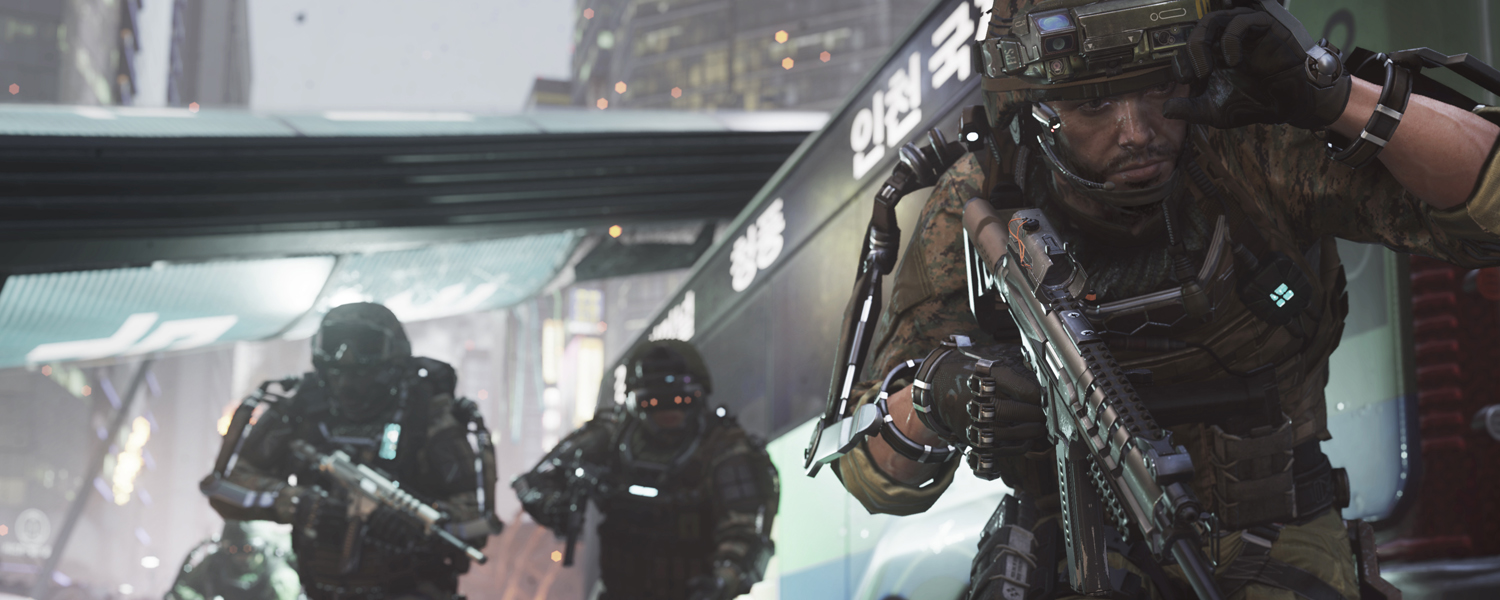
The campaign as mentioned earlier in the review takes up around 6 hours depending on the difficulty you’re playing it on. (For reference, our main walkthrough was performed on normal, and we replayed certain sections on different difficulties to compare them and analyse the artificial intelligence of the game.) The campaign offers an experience that is more diverse than Call of Duty usually is, and gives the player a good training run with all of the weapons and abilities available in the game. Whilst most of the game consists of brute actions there are some stealth-inspired sections, but in most of these it’s only an optional way of action, whilst in one or two of them it can result in an immediate failure.
Vehicle sections are also present, but these sections are very hit-or-miss. However, some of these sections are plagued by clunky handling buggy coding, which can result in experiences that may not be as fun as the developer intended. An example of this is the Golden Gate bridge that was frequently demo’d in the advertising campaign, in which the player drives a van to the site in an intense pursuit. Due to the handling I found myself often having trouble to keep a clear driving line, and there seemed to be constant clipping with other vehicles as the game didn’t exactly seem prepared for player-caused collisions with AI vehicles.
The basis of the multiplayer modes is very solid, and true to the traditional formula the franchise has held as a standard in the past. In this fast-paced gameplay skill may seem a requirement, but often coincidence and luck may have much more to do with it as you’ll often have your ups and downs in your multiplayer career. Basic multiplayer modes from the previous instalments such as deathmatch, kill confirmed and domination have returned, and the game even offers a few original modes which add a nice bit of variety to the selection.
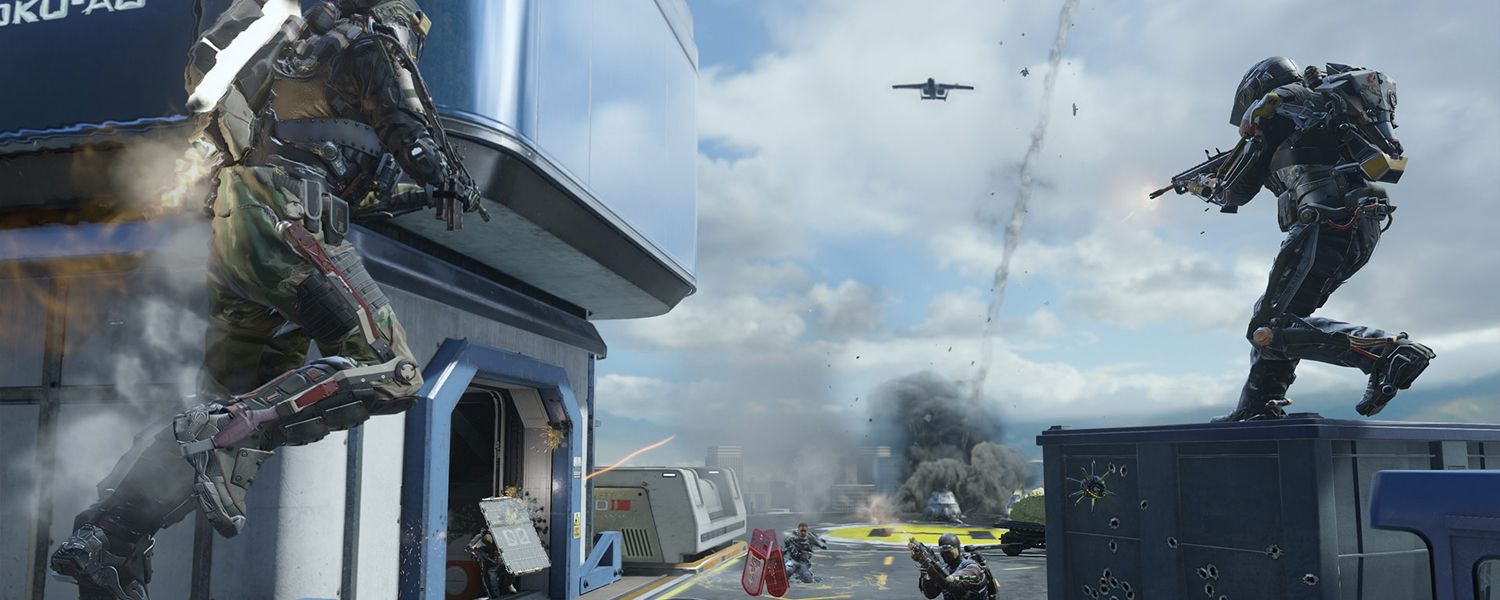
Balancing isn’t always that stable, and respawning is often a problem like it has been in the past. The netcode in its current state seems a bit problematic, with hit-boxes and and lag compensation causing some frustration situations. This isn’t exactly the result of a bad connection, as it seemed to have the same occasional effect on multiple connections. It’s not an issue a 100% of the time, but it’s noteworthy enough to take it into account.
(Note: Current connection/lag issues may not be representative of the title at a later date due to software/client updates. Experiences may vary by platforms due to network/server structures.)
Customisation in the multiplayer modes is pretty well-done, and the Pick-13 system offers a nice fix for any player to adapt to their play style. The Pick-13 is a system where the player is given 13 points to customise their load-out. These points aren’t restricted to certain items. For example; if you don’t or barely use killstreaks you could scrap them altogether, and spend them on a different perk or item that better suits your needs. With this system in play the game allows you to suit every aspect of your load-out to your needs.
And last but not least: Exo Survival. In Exo-survival four players are given the objective to fight through various amounts of enemies which enter the map on a wave-basis. Certain waves may also contain specific objectives; such as collecting certain items or performing specific actions. Exo Survival offers a nice slice of content for players, but it may seem a bit simplistic for players who want a more unique experience that differentiates itself from the rest of the game.


